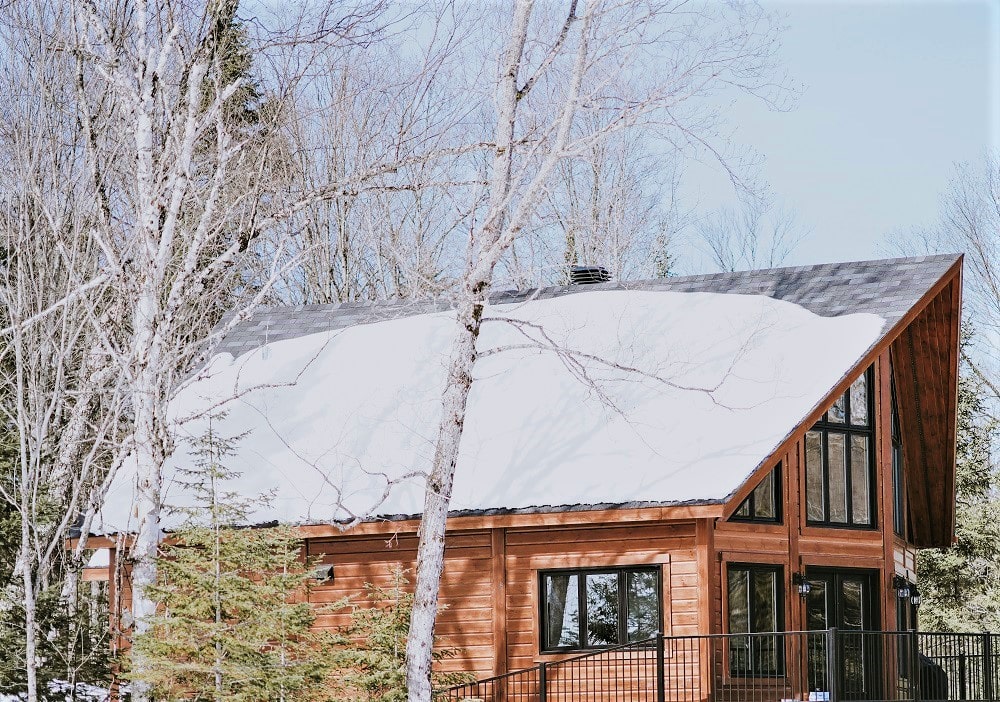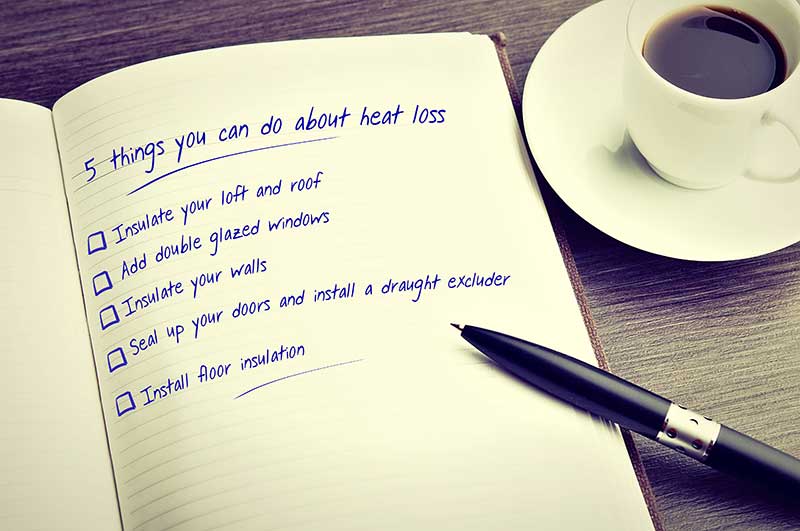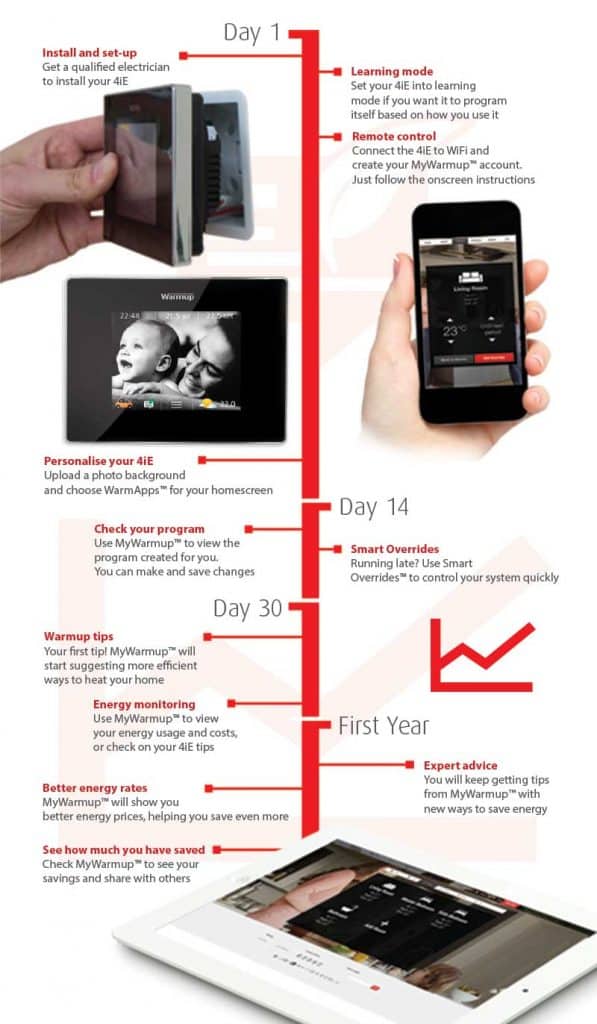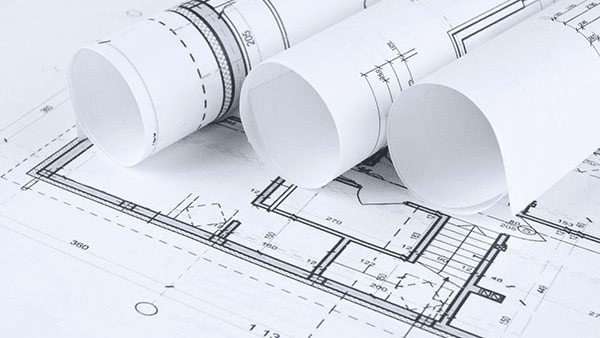Heat loss is where heat escapes from inside the building to the outside environment. Knowing your home’s heat loss helps determine the most efficient underfloor heating system for your needs and will ensure that your property is adequately heated. In this guide we’ll explore the best ways to reduce heat loss whilst lowering your home’s energy consumption. You will discover:
-
What a heat loss calculation means
-
How floor heating helps reduce heat loss
-
How to improve the insulation levels of your property
-
Tips to reduce air leakage
-
More energy-saving ideas to save you energy and money
Why a heat loss calculation is important
Heat is lost typically through the roof, walls, windows and floors of a building. A home with high levels of heat-loss will impact on the efficiency of your heating system and cost you more money, but the good news is that there are few simple steps you can take to reduce this loss and in turn, reduce your heating bills.
When looking at a new heating system for your home, knowing the heat loss of the building will tell you if the system will provide enough warmth for the space. Heat loss will also validate whether the building meets regulatory approval and, more significantly, determine the energy requirements and running costs of your home. If the heat loss in your home is greater than the heat output from your heat source, your heating bills will literally go through the roof as you’ll be paying money for extra heat that escapes the room.
How does underfloor heating minimise heat loss?
In addition to minimising heat loss, investing in an energy-efficient heating method will reduce your energy consumption. The lower your heat loss, the less heating you will require and the less it will cost you. The less heating you require, the more likely an energy-efficient underfloor heating system will work for you.
Our range of electric floor heating systems and water systems operate at lower temperatures than traditional heating options whilst offering the same level of warmth. The radiant heat technology of underfloor heating allows for quick heat-up times and low running costs, so you enjoy the benefits of sustainable warmth whilst saving money on your heating bills. Underfloor heating is ideal in low heat loss areas where it will provide gentle, energy-efficient heat without contributing to a stuffy atmosphere. If the heat loss is low, it is highly likely that underfloor heating will be enough. But if the heat loss is high, you may need to look at ways to reduce heat loss in your home through improving insulation levels to ensure efficient performance of the UFH system.
Learn more about the benefits of UFH in our Buying Guide
5 things to help reduce heat loss
Improving the insulation of your home is the main way to battle heat loss through floors, doors, walls, windows and roofs. You can either install more insulation or ensure that there are no gaps in the existing insulation as adequate insulation will keep heat loss to a minimum.
1. Floor insulation
For floors, it is important to ensure sufficient insulation between the ground and the floor surface. In new buildings, sufficient insulation is installed during the construction and in older buildings, insulation layers can be laid on existing floor surfaces. Warmup has a variety of floor insulation solutions that will help lower your home’s heat loss whilst enhancing the responsiveness of your floor heating system, improving its heat up times and maximizing on cost savings.
View Insulation Boards
2. Wall insulation
To reduce heat loss from walls, cavity wall insulation can be installed. This involves blowing insulating material into the gap between the brick and the inside wall. Care should be taken to ensure that no gaps are left in the insulation. The use of cavity wall insulation reduces air circulation and therefore minimises heat loss through walls.
3 Roof and loft insulation
For roofs, the easiest way to prevent heat loss is through insulation of the ceiling in the loft cavity. It is important to put adequate insulation in the loft or ceiling and to ensure that no gaps are left, especially around hatches, electric cables and pipework. There is an easy test for seeing if there are any gaps or leaks – just take a look at your roof on a frosty morning and if you see any areas without frost, you know that there are some air leaks or insulation gaps as these will show up as areas without frost. The use of more loft insulation can reduce heat loss by reducing the movement of air upwards. The fibres of the insulation can also prevent the trapped air from circulating and causing convection currents.
If you don’t already have roof or loft insulation, some energy providers and government agencies offer free roof and loft insulation so it’s worth checking with your provider whether your home qualifies as this can save you money on your heating bills. Any cracks or breaches in walls or ceilings or floors should also be filled to reduce heat loss.
4. Upgrading your windows
To reduce heat loss through windows, the installation of double / triple glazing can significantly reduce any losses. Generally, the gaps between the panes of glass are filled with air. Heat loss is reduced as air is a poor conductor of heat. The use of caulking materials around window and door frames can also reduce heat loss.
5. Reducing air leakage around doors
Draught excluders around doors can reduce heat loss and save energy too. These cost very little and take minutes to install. The typical air leakage from doors is 11% and whereas a gap under the door may seem insignificant, a 1/8-inch gap under a 36-inch-wide exterior door will let as much cold air in your home as a 2.4 inch-diameter hole punched in the wall.
Quick energy-saving tips
There are other simple ways to reduce the overall heat loss in your home, including fitting carpets, underlays and curtains. A main loss of warm air can be, perhaps surprisingly, through windows and doors which are left open. Leaving windows open is one of the major sources of heat loss as people usually open the windows when the indoor air feels stuffy or is simply too hot. All this wastes energy and money so getting a heating system that does not overheat makes sense. Underfloor heating provides gentle radiant heat that won’t contribute to a stuffy atmosphere, so you don’t have to open windows that allow heat and money to escape. Controlling your UFH system with a dedicated Smart thermostat will also improve the performance of the heater, improving its efficiency whilst simultaneously offering long-term cost savings.
Reducing heat loss and saving money on your bills is easy with underfloor heating and good levels of insulation. Get a free instant quote with Warmup today to find the perfect heater and accompanying insulation for your home.





![Thumbnail [200x250]](/wp-content/uploads/Electric-Category-Page-Image.jpg)
![Thumbnail [200x250]](/wp-content/uploads/Hydronic-Category-Page-Image-1.jpg)
![Thumbnail [200x250]](/wp-content/uploads/6iE-Projects.jpg)